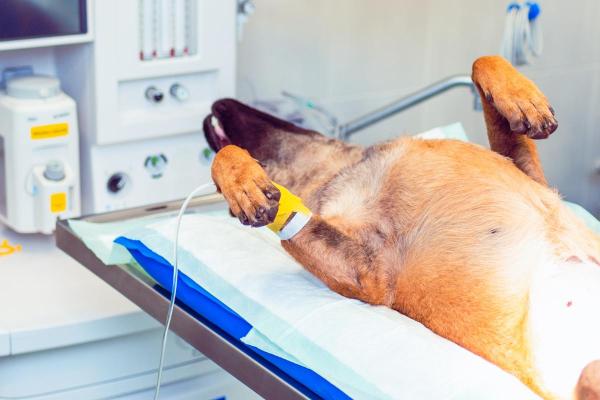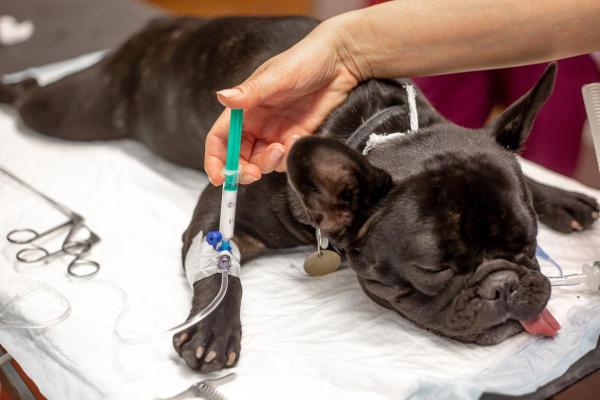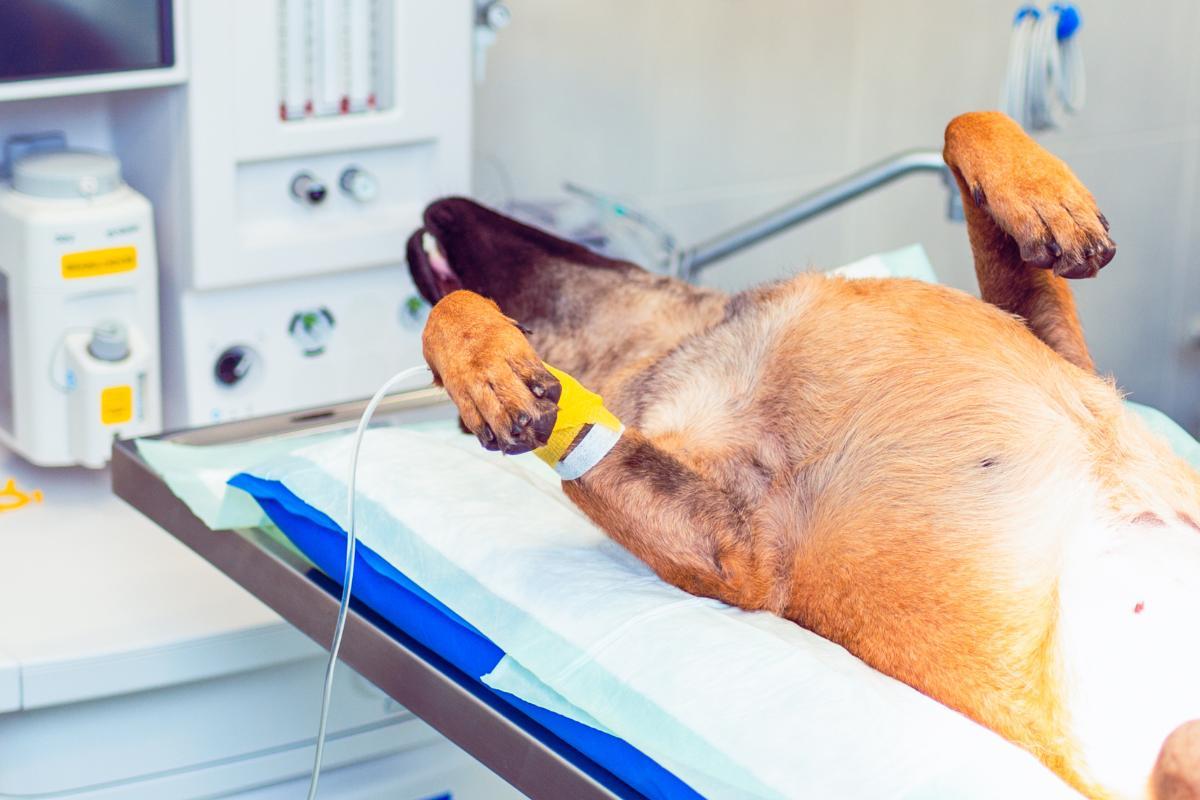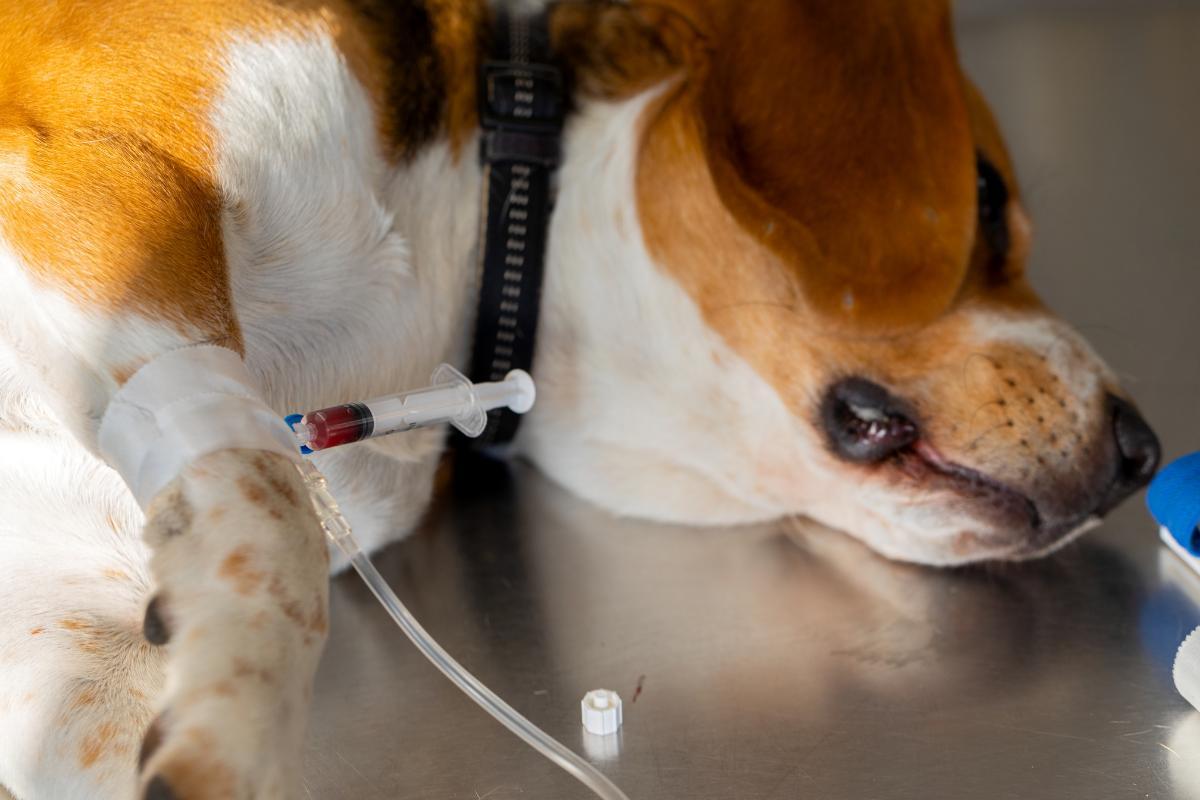Are Dogs Aware When Sedated?



See files for Dogs
Sedation often raises many questions and concerns for dog owners, yet it is sometimes necessary to help our dogs avoid pain or stress during certain procedures. In veterinary clinics, sedation is commonly used for minor surgeries, wound care, dental cleanings, and diagnostic tests. Rest assured, veterinary professionals are highly trained in administering the proper doses based on your dog’s needs, ensuring the process is both safe and effective.
If you're still feeling uneasy, this AnimalWised article will help address some common concerns, such as what your dog experiences during sedation, how long the effects last, and any challenges that may arise during the process.
What is sedation in dogs?
Sedation in dogs is a routine procedure performed in veterinary clinics, typically involving the intramuscular injection of a tranquilizing medication. This medication usually takes effect within a few minutes, calming the dog without causing full unconsciousness.
What is the difference between sedation and anesthesia?
While general anesthesia renders the animal completely unconscious and unable to feel pain or respond to any stimuli, sedation only induces a state of deep relaxation or drowsiness. During sedation, the dog remains calm and still, but it may still react to strong stimuli such as loud noises or sharp pain.
Because sedation is milder than anesthesia, its effects wear off more quickly and generally pose fewer risks. On the other hand, general anesthesia requires a thorough pre-procedure health assessment and close monitoring throughout the process to ensure the animal's safety.

Types of sedation in dogs
Sedation in dogs can be classified in two main ways: by the level of relaxation and drowsiness it induces or by the route of administration.
Sedation based on depth of drowsiness
Depending on the goal of the sedation and the specific drug used, dogs can experience varying levels of relaxation, ranging from mild to deep sedation.
It’s important to note that sedation does not induce full unconsciousness, as it is not the same as anesthesia. Dogs remain responsive to strong stimuli, but are much calmer or sleepier.
- Light sedation: the dog remains awake but is calm, usually with the help of a muscle relaxant or anti-anxiety medication. This type of sedation is used for quick and painless procedures, such as routine examinations or diagnostic tests (like X-rays), particularly in nervous dogs.
- Moderate sedation: the dog becomes drowsier and more relaxed. While it still responds to stimuli, it is calmer and less likely to make sudden movements. Moderate sedation is typically used for procedures that require the dog to stay still for an extended period, such as dental cleanings or wound care.
- Deep sedation: in deep sedation, the dog is extremely drowsy, practically immobile, and minimally responsive to environmental stimuli, though not entirely unconscious. This level is often used for minor surgeries or treatments, such as removing small skin masses or performing dental extractions.
Sedation based on route of administration
Sedation in dogs can also be categorized by how the sedative is delivered:
- Intramuscular injection: this is the most common method in veterinary clinics, providing fast and reliable sedation.
- Oral sedation: administered through a pill or liquid, often used in cases where the animal may need mild, at-home sedation for travel or other stressful situations.
- Inhalation sedation: less common but sometimes used in certain settings, where the sedative is administered as a gas.
It's important to understand that the method of administering sedation to dogs varies depending on several factors. For instance, the type of procedure plays a key role. In situations where quick sedation is necessary, such as emergencies or when a dog must remain still for diagnostics, an injection is preferred because it works much faster than oral sedation.
Additionally, a dog's behavior is another crucial consideration. For particularly anxious or resistant dogs, intramuscular injection is often chosen as it takes effect quickly, calming the dog before stress levels become too high. In contrast, oral sedation, which takes longer to work, may not be as effective in these cases.
What do sedated dogs feel?
A sedated dog is not fully unconscious and is still able to perceive environmental stimuli, although its response varies depending on the level of sedation—whether mild, moderate, or deep.
Typically, a sedated dog feels very relaxed both mentally and physically. This calm state helps prevent fear-based reactions like sudden movements or aggression, allowing the veterinarian to perform procedures safely.
With mild sedation, a dog often remains awake, with its eyes open, and can still perceive sounds, people, and even mild pain. Therefore, it's important for both the owner and veterinarians to maintain a calm environment, speaking softly and handling the dog gently. The presence of the owner, offering gentle petting and soothing words, can further help to keep the dog calm.
In deeper levels of sedation, the dog is mostly unaware of its surroundings but may still respond to intense stimuli, such as loud noises, by waking up suddenly.

Is it dangerous to sedate a dog?
Although sedation is generally safer than general anesthesia, inducing a dog into a state of drowsiness or semi-consciousness carries some degree of risk. This is why veterinarians always obtain signed authorization from the animal's guardians before proceeding.
Today, the drugs used for sedation are highly safe, and most have an antidote that can quickly reverse the sedative effects if needed. Veterinarians are trained to determine when sedation is appropriate, which drug to administer, the ideal route of administration, and the correct dosage based on the dog's weight and size. This expertise makes it rare for a dog to experience severe complications or long-term effects from sedation.
However, as with any medical procedure, there are inherent risks, particularly in older dogs or those with pre-existing conditions, such as heart, respiratory, kidney, or liver diseases.
To minimize the chances of complications, such as low blood pressure (hypotension) or respiratory depression, a pre-sedation health check is highly recommended. Monitoring the dog throughout the procedure is also essential to ensure safety.
Ever wondered about the impact of anesthesia on your dog? Dive into our detailed guide on what to expect.

How long does a sedated dog last?
The duration of sedation in dogs can vary significantly depending on the type of drug, dosage, and method of administration.
Short-acting sedatives typically last no more than an hour, while long-acting sedatives can keep an animal sedated for up to eight hours or more.
The method of administration also plays a key role in how quickly the sedative takes effect. Oral sedatives, for example, take longer to act because they must be absorbed through the digestive system, making their onset slower. These sedatives are also metabolized more slowly, meaning their effects tend to last longer. However, oral sedatives usually induce mild sedation and are rarely used, as it is harder to monitor and adjust their effects. They are typically reserved for specific, controlled situations.
Intramuscular injections, on the other hand, are commonly used in veterinary practices because they produce rapid sedation and are easier to control. Veterinarians can quickly reverse the sedation with an antidote if necessary, either due to complications or if the procedure has concluded.
Sedatives administered by inhalation are often used for more complex procedures, such as surgeries. This method allows for continuous administration, precise control, and real-time monitoring. The effects of inhalation sedatives also wear off quickly once the inhaler is removed, making them ideal for lengthy or delicate interventions.
Finally, if a reversal drug (antidote) is used, the sedation can wear off much more quickly, often within 15 to 30 minutes.
If you're curious about how long it takes for cats to recover from anesthesia, you'll want to explore our detailed guide on the topic.
This article is purely informative. AnimalWised does not have the authority to prescribe any veterinary treatment or create a diagnosis. We invite you to take your pet to the veterinarian if they are suffering from any condition or pain.
If you want to read similar articles to Are Dogs Aware When Sedated?, we recommend you visit our Medicine category.








